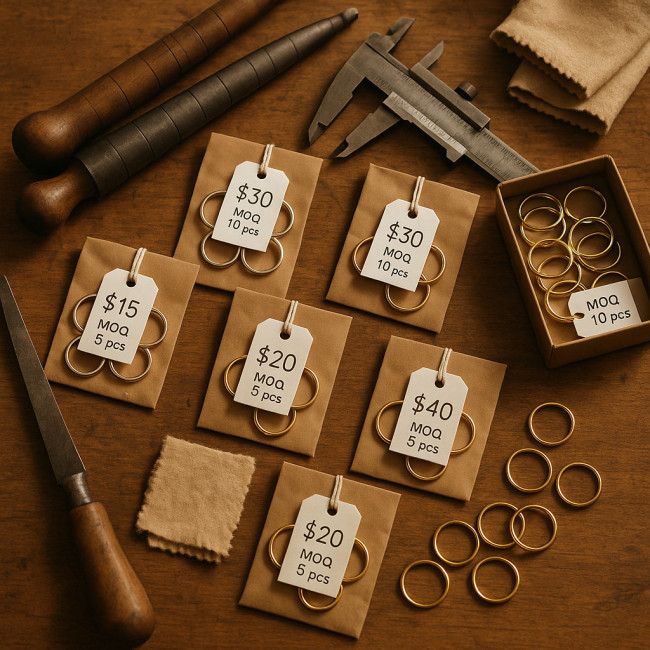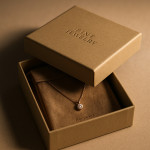Wholesale pack agreements: jewellery edition—set margins that still reward craft
Negotiating a wholesale pack agreement can feel like walking a tight-rope: boutiques need healthy mark-ups, but you must still be paid for painstaking bench hours and precious materials. This guide helps independent jewellers set margin structures that protect profit, keep retailers happy, and strengthen long-term partnerships.
Why wholesale packs differ from one-off orders
Unlike made-to-order pieces, wholesale packs lock you into fixed quantities, payment terms and replenishment windows. Retailers seek certainty; you need security that each unit still covers metal, stone, labour and overheads. A clear wholesale pack agreement balances both.
The core elements of a strong agreement
- Minimum order quantity (MOQ) that justifies batch production.
- Keystone margin or agreed mark-up formula.
- Lead-time with buffer for hallmarking and quality control.
- Re-order incentives—tiered pricing or free shipping after a threshold.
- Payment schedule: deposit, balance and late-fee clauses.
Crunching the numbers: cost-based vs keystone pricing
Two models dominate jewellery wholesale:
| Pricing model | How it works | Typical margin for maker | Ideal when… |
|---|---|---|---|
| Cost-based | You add a fixed gross profit (e.g. 55%) on top of unit cost. | 40-60 % | Raw material prices are volatile. |
| Keystone | Retailer doubles (or 2.2×) your wholesale price for RRP. | 30-50 % | Classic silver & gold lines with predictable costs. |
To choose, list every expense: recycled gold, ethically sourced gems, studio rent, hallmarking, insurance, packaging and your own wage. Then model both methods: the one that keeps net profit per hour at or above your target wins.
The margin sweet spot: 2.4× rule of thumb

Industry surveys show independent jewellers thrive when retailers apply around a 2.4× mark-up. That leaves space for occasional promotions while you still bank roughly 50 % gross profit. Test this against your BOM (bill of materials) before signing. Remember to include hidden overheads such as workshop electricity, equipment depreciation, annual tool sharpening, continuing professional development courses, web-hosting fees and pension contributions; overlooking these seemingly small costs can quietly erode your real hourly earnings and undermine sustainability targets over the long term.
Source : So Enchanting Jewellery Report 2024
Five levers to protect your craft margin
1. Material clauses
If metal prices spike, insert a sliding-scale surcharge. This is common with eco-certified metals where traceability premiums apply.
2. Packaging contributions
Premium unboxing is vital for luxury lines. Split the cost or supply branded boxes yourself after aligning specs with our custom packaging briefing guide.
3. Re-order cadence discounts
Offer 5 % off if the retailer re-orders within 90 days. The predictable volume offsets the smaller margin.
4. Limited exclusivity
A retailer may request regional exclusivity. Cap it to 12 months and tie it to minimum annual spend so you are compensated for withheld channels.
5. Sustainable sourcing upsell
Pieces featuring recycled gemstones command higher end-user prices. Pitch a premium capsule line with a higher wholesale base.
Negotiation script: from quote to closed deal
- Open with value: highlight artisan labour hours and certified materials.
- Present two margin options: keystone (2.4×) and cost-based. Let the buyer choose.
- Add sweetener: free try-on videos powered by virtual try-on demos for their e-commerce page.
- Outline risk-reversal: repair guarantee and clear returns window.
- Set the next step: share a draft agreement by EOD, secure a 30 % deposit within seven days.
Common pitfalls and how to avoid them
- Open-ended lead-times: always state a final dispatch date.
- Consignment confusion: wholesale terms are purchase orders, not stock-on-loan.
- Hidden card fees: clarify that transaction costs sit with the retailer.
- Uninsured shipping: state responsibility transfers after insured courier pick-up.
Quiz: Test your wholesale-ready mindset
FAQ
- What is the minimum margin I should accept?
- Aim for at least 45 % gross profit after all costs. Anything lower usually underprices your labour.
- Can I charge for sample packs?
- Yes—many jewellers invoice samples at wholesale price and credit them against the first bulk order.
- How do I handle returns on damaged pieces?
- Include a repair or replace window (typically 30 days) with photo evidence required before shipping items back.
- Should I offer payment terms?
- Net-30 is standard for boutiques. Protect cash flow with a deposit and late-fee clause.
- Where can I list my wholesale-ready catalogue online?
- Publishing on a curated craft designer directory helps retailers verify your credentials quickly.
Next steps
Download our free margin calculator, review your BOM, and draft a wholesale pack template today. Need bespoke advice? Book a strategy call and transform uncertainty into crystal-clear agreements.











